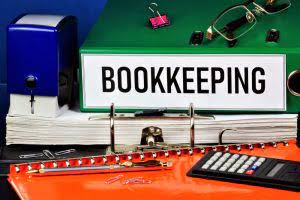Other Variable Costs Definition
Content

She has to borrow money to buy the new software and finance the training and the interest on that loan is a variable cost as well. Variable costs change based on the level of production, which means there is also a marginal cost in the total cost of production. A fixed cost is a cost that does not change with an increase or decrease in the amount of goods or services produced or sold. As the production output of cakes increases, the bakery’s variable costs also increase.
- An example of a variable cost is the resin used to create plastic products; resin is the key component of a plastic product, and so varies in direct proportion to the number of units manufactured.
- And, because each unit requires a certain amount of resources, a higher number of units will raise the variable costs needed to produce them.
- Every piano that is produced has to have a set of piano keys that costs $250.
- Instead, alterations in contractual agreements or changes in rents can affect the rate of payment for fixed costs.
- When it comes to fixed and variable costs, a clear understanding of each is essential for identifying the correct price level for goods and services.
She was a university professor of finance and has written extensively in this area. IG International Limited is licensed to conduct investment business and digital asset business by the Bermuda Monetary Authority. Please ensure you understand how this product works and whether you can afford to take the high risk of losing money. Get free online marketing tips and resources delivered directly to your inbox. Apps like PayPal typically charge businesses per transaction so customers can check out purchases through the app.
Is Marginal Cost The Same As Variable Cost?
Variable costs are commonly designated as COGS, whereas fixed costs are not usually included in COGS. Fluctuations in sales and production levels can affect variable costs if factors such as sales commissions are included in per-unit production costs. Meanwhile, fixed costs must still be paid even if production slows down significantly. Fixed and variable costs are the two main types of expenses that companies must pay in the course of doing business.

If a company scales back production, then variable costs will drop. Fixed costs will stay relatively the same, whether your company is doing extremely well or enduring hard times. Think of them as what you’re required to pay, even if you sell zero products or services. Fixed costs are those that can’t be changed regardless of your business’s performance.
Total Variable Cost
For example, if the cost of labour is $10 per hour, and the level of activity is 100 hours, then the total variable cost for labour would be $1,000. If the level of activity increases to 200 hours, then the total variable cost for labour would increase to $2,000. If you, as the owner, see that your profits are falling or you’re not breaking even, you might decide to reduce your fixed costs by moving to a smaller storefront. Or you might target your variable costs by reducing your bakers’ pay or using cheaper ingredients. Recently ABC International was approached for special order for manufacturing of mobile phones for one of its corporate clients. The client offered $ 14 per unit which was rejected by the Costing Head. With variable costs of $16 per t-shirt, you would need to sell 400 shirts per month in order to break even.
- Fixed costs remain the same no matter how much the business produces.
- A fixed cost is a cost that does not change with the level of production or output.
- But you need to pay monthly rent and other bills no matter how many cupcakes you sell.
- For example, if a bakery uses one pound of flour for every loaf of bread it produces, the flour is a variable cost.
- Some costs, called mixed costs, have characteristics of both fixed and variable costs.
You should consider whether you understand how this product works, and whether you can afford to take the high variable cost risk of losing your money. Suppose that a consulting company charged 1,000 hours of services to its clientele.
What Is A Variable Cost? A Simple Definition For Small Businesses
Since variable costs are tied to output, lower production volume means fewer costs are incurred, which eases the cost pressure on a company — but fixed costs must still be paid regardless. A variable cost is an expense that rises or falls in direct proportion to production volume. Variable costs differ from fixed costs, which remain the same even as production and sales volume changes. Small businesses with higher variable costs are not like those with high fixed costs—costs that don’t change with revenue and output, such as rent and insurance. Companies with high variable costs need to produce less to break even but they also have lower profit margins than companies with high fixed costs, according to Business Dictionary. In this case, suppose Company ABC has a fixed cost of $10,000 per month to rent the machine it uses to produce mugs. If the company does not produce any mugs for the month, it still needs to pay $10,000 to rent the machine.
If the revenue that they are receiving is greater than their variable cost but less than their total cost, they will continue to operate will accruing an economic loss. If their total cost is less than their variable cost in the short run, the business should shut down. If revenue is greater than their total cost, this firm will have positive economic profit. A company that seeks to increase its profit by decreasing variable costs may need to cut down on fluctuating costs for raw materials, direct labor, and advertising. However, the cost cut should not affect product or service quality as this would have an adverse effect on sales.
Example Of Variable Costing
It’s essential to know what these costs are, and to budget strategically so that they are manageable – no matter what the future holds. Covering fixed costs is a necessary fundamental in order to keep your business alive.

Other examples of https://www.bookstime.com/s are delivery charges, shipping charges, salaries, and wages. Performance bonuses to employees are also considered variable costs. In many instances, reducing variable costs are easier to manage without major disruptions than changing fixed costs. When you operate a small business, you have two types of costs – fixed costs and variable costs. Unlike variable cost which is subject to change depending on volume of a product or service provided, fixed costs are those which do not fluctuate according to sales volumes. Many companies consider variable costs when making profit projections or calculating break-even points for specific ventures or projects. Some expenses may fluctuate according to a corresponding change in output, which may cause inconsistencies on your balance sheet.
More Definitions Of Other Variable Costs
To dig in deeper, we encourage you to review the resources shared below, and stay tuned for future articles on our blog with examples and other details relating to costs. Fixed costs, on the other hand, do not fluctuate with the production levels.

In this way, a company may achieveeconomies of scale by increasing production and lowering costs. Fixed costs remain the same regardless of whether goods or services are produced or not. As such, a company’s fixed costs don’t vary with the volume of production and are indirect, meaning they generally don’t apply to the production process—unlike variable costs. Marginal cost refers to how much it costs to produce one additional unit.
Your company’s total fixed costs will be independent of your production level or sales volume. It’s always a good idea to have a clear understanding of the types of costs you incur in your business. Both fixed and variable costs play a crucial role in your business’s profitability and growth.
The main variable cost will be materials and any energy costs actually used in production. Calculating variable costs can be done by multiplying the quantity of output by the variable cost per unit of output. Suppose ABC Company produces ceramic mugs for a cost of $2 per mug.
Variable costs are costs incurred during the production of goods and services, these costs are directly affected by changes in the quantity of goods and services produced. Sales commission, raw materials, wages, utility bills, direct labor and few others are examples of variable costs. Variable cost is different from fixed cost, this is because fixed cost does remain unchanged despite changes in the output of activity of the firm. In the case of variable cost, increase in the production cause an increase in variable cost while a decline in production level leads to a decrease in variable cost.
What Is Unit Variable Cost?
Variable costs change based on how many goods are produced or services provided. A variable cost is a recurring cost that changes in value according to the rise and fall of revenue and output level.
The Difference Between Fixed Cost, Total Fixed Cost, And Variable Cost
If a business increased production or decreased production, rent will stay exactly the same. Although fixed costs can change over a period of time, the change will not be related to production, and as such, fixed costs are viewed as long-term costs. Variable cost per unit refers to the costs of each unit of goods that a company produces, variable costs change as changes occur in the production level or activity level of the company. Unit Variable Cost is affected by changes in the business, extra cost is incurred when more units of goods are produced. A fixed cost is a cost that does not change with the level of production or output. A variable cost, on the other hand, does change with the level of production or output.
Keep in mind that fixed costs may not be consistent in the long run. In the example above, the rent will stay the same until the business no longer occupies the space, or when the agreement comes to an end and the owner decides to increase the rent for the next rental period. A change in your fixed or variable costs affects your net income. Fixed costs do not change with the amount of the product that you produce and sell, but variable costs do.
In the long run, if the business planned to make 0 shirts, it would choose to have 0 machines and 0 rooms, but in the short run, even if it produces no shirts it has incurred those costs. Similarly, even if the total cost of producing 1 shirt is greater than the revenue from selling the shirt, the business would product the shirt anyway if the revenue were greater than the variable cost.
British Dictionary Definitions For Variable Cost
These can include parts, cloth, and even food ingredients required to make your final product. The Structured Query Language comprises several different data types that allow it to store different types of information… Our Accounting guides and resources are self-study guides to learn accounting and finance at your own pace. Investopedia requires writers to use primary sources to support their work. These include white papers, government data, original reporting, and interviews with industry experts. We also reference original research from other reputable publishers where appropriate.




